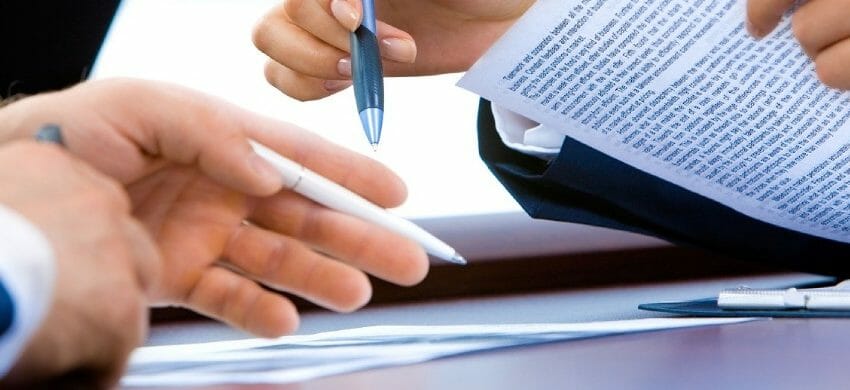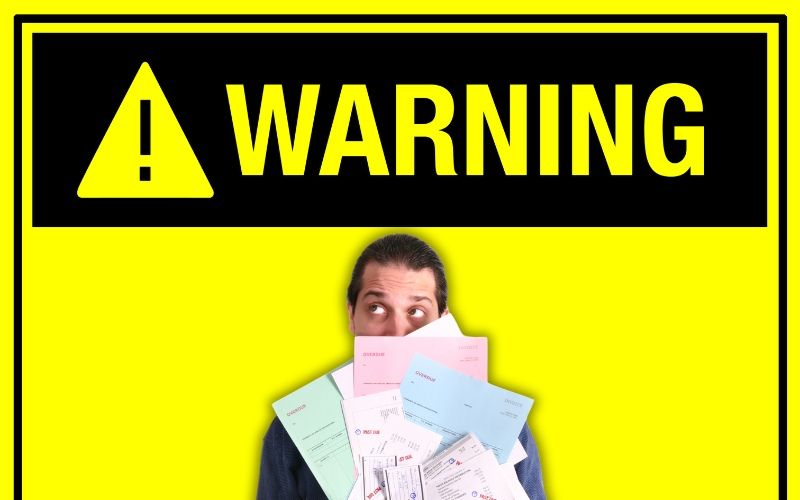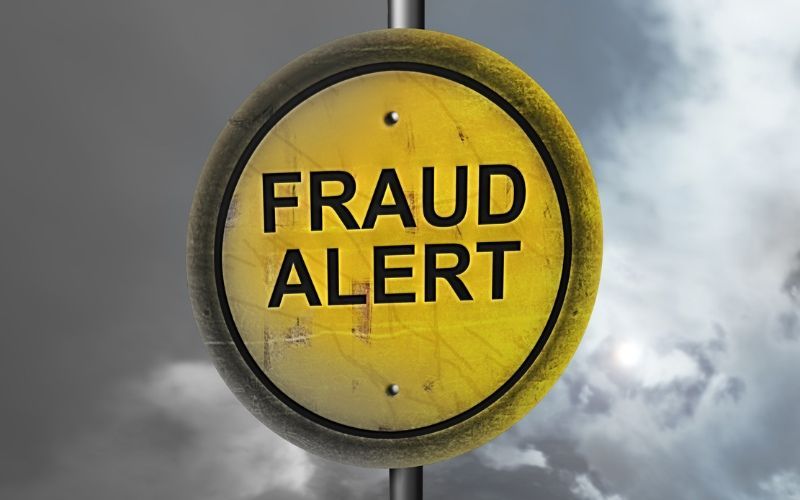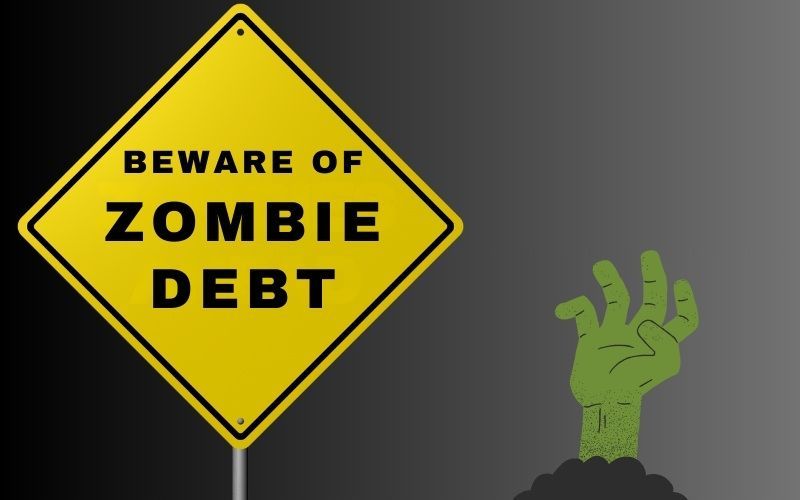What Is A Debt Validation Letter And Why You Would Need One
Last Updated: April 1, 2024
Your Guide to Validating Debts in Collections

Disclaimer: We are not qualified legal or tax professionals and are not giving advice. Always speak with a qualified professional before making any legal or financial decisions.
Facing debt collection can be daunting, but understanding your rights can empower you to take control of the situation. A debt validation letter is a critical tool in this process, legally requiring debt collectors to provide proof of the debt they claim you owe.
Within the first five days of contact, collectors must outline the amount owed, the creditor's name, and your rights to dispute this debt.
This article will guide you through what a debt validation letter is, why it's crucial for protecting your financial health, and how you can use it to ensure you're only paying debts that are legitimately yours. Plus, we'll provide a sample letter and actionable steps to take, whether you're confirming a debt's validity or disputing it.
Don't delay your debt solution. Click here to speak directly to a debt specialist for free.
What Can a Debt Validation or Debt Collection Letter Tell You?
Debt is bought and sold like any other commodity and some scammers will create false debts in the hopes of making easy money. A debt validation letter will allow you to decide if the debt is valid and not falling outside the statute of limitations for collections.
Debt collectors are only required to give out the name of the original creditor, the balance owed, and the name of the debtor. This information may make it easier for you to determine if you owe the debt if it is nearing or past the statute of limitations date, or if there is an error in the amount.
Debt Validations Letter from Debt Collectors To You
Collectors are required by the Fair Debt Collection Practices Act to send you a written debt validation notice with information about the debt they’re trying to collect. It must be sent within five days of first contact. If they refuse to send a debt validation letter, you may have grounds to file a lawsuit against them.
The debt validation letter should include:
- the amount owed
- the creditor’s name
- a statement declaring that the debt is considered valid unless you dispute it within 30 days of the first contact
- a statement that, within the 30-day time frame, the debt collector will respond by mail if you write to dispute the debt or request more information
- A statement that, within the 30-day time frame, the original creditor must provide information about the debt when requested
Debt Validation Letter from You to the Debt Collector
If you have been contacted by a debt collector, you may want to send a debt validation letter to request more information on the debt. There are pros and cons of sending the letter that we will discuss in the next section. Your debt validation letter should include the following requests:
- Why does the debt collector think you owe the debt?
- A copy of the original contract or other documentation
- A copy of the last billing statement
- The amount owed when the debt was purchased
- The date of last payment
- The age of the debt
- The authority to collect the debt (must be licensed in your state)
Remember to always send a debt validation request by certified mail with a return receipt requested.
When Should You Send a Debt Validation Letter?
Sending a debt validation letter can focus the collection agency’s attention on you, so you may not want to send one instantly. If you are contacted by a debt collector, you should ask for the creditor’s contact information and then follow up on this first. The original creditor should be able to confirm that a collection agency or debt buyer is involved. Once you have this information, you should be able to determine if it is your debt and what you want to do about it.
These are some situations where a debt validation letter may work in your favor.
- A particularly aggressive debt collector
- A debt validation letter will force a short pause in their efforts or may deter someone with a shaky claim from collecting your debt
- You intend to pay the debt in full
- The debt appears to be invalid (not yours)
- The debt is less than $1000
- It is credit card debt
- The debt is under 3 years old
Before sending a debt validation letter, think about the message you are sending. The debt collector now knows that you have a reason to want to pay off your debt. They will have to gather all the documentation you requested and they now might have enough information to bring a lawsuit against you. And since 80% of lawsuits are ignored and settled in the debt collector’s favor, they’ll probably win! It's essential to be aware of the minimum amount a debt collection agency will sue you for.
If the debt is valid, try verbally negotiating with the debt collector. You may be able to settle on a payment amount without giving the debt collector information about yourself which will make reaching an agreement impossible. Paying off a Debt in Collections
When NOT to Send A Debt Validation Letter
There are also very good reasons to not send a debt validation letter. These include:
- If the debt is nearing the statute of limitations date
- consider allowing it to age past the statute date
- acknowledging the debt can reset the statute of limitations clock
- If it is older than the statute of limitations, you no longer owe the money
- The debt has passed through many hands
- It is medical, telecommunications, or utility debt
- The debt is over 6 years old or older than your state’s statute of limitations
- You are disputing the amount
- Send a debt dispute letter to the credit reporting agencies. This will not give the collection agency ammunition to use against you. Debt validation can affect your credit score if the unresolved debt stays on your credit report. Old debt will have been expunged from your credit report anyway. It's crucial to understand how long a debt collector can pursue old debt and What Happens to Credit Card Debt after 7 Years.
Sample Debt Validation Letter
If you have decided that a debt validation letter is in your favor, we have included a sample debt validation letter for you to copy and paste. This letter is copied from the Consumer Financial Protection Bureau.
[Your name]
[Your return address]
[Date]
[Debt collector name]
[Debt collector Address]
Re: [Account number for the debt]
Dear [Debt collector name]:
I am responding to your contact about a debt you are trying to collect. You contacted me by
[phone/mail], on [date] and identified the debt as [any information they gave you about the debt]. Please supply the information below so that I can be fully informed:
Why do you think I owe the debt and to whom I owe it, including:
- The name and address of the creditor to whom the debt is currently owed, the account number used by that creditor, and the amount owed.
- If this debt started with a different creditor, provide the name and address of the original creditor, the account number used by that creditor, and the amount owed to that creditor at the time it was transferred. When you identify the original creditor, please provide any other name by which I might know them, if that is different from the official name. In addition, tell me when the current creditor obtained the debt and who the current creditor obtained it from.
- Provide verification and documentation that there is a valid basis for claiming that I am required to pay the debt to the current creditor. For example, can you provide a copy of the written agreement that created my original requirement to pay?
- If you are asking that I pay a debt that somebody else is or was required to pay, identify that person. Provide verification and documentation about why this is a debt that I am required to pay.
The amount and age of the debt, including:
- A copy of the last billing statement sent to me by the original creditor.
- State the amount of the debt when you obtained it, and when that was.
- If there has been any additional interest, fees, or charges added since the last billing statement from the original creditor, provide an itemization showing the dates and amount of each added amount. In addition, explain how the added interest, fees, or other charges are expressly authorized by the agreement creating the debt or are permitted by law.
- If there have been any payments or other reductions since the last billing statement from the original creditor, provide an itemization showing the dates and amount of each of them.
- If there have been any other changes or adjustments since the last billing statement from the original creditor, please provide full verification and documentation of the amount you are trying to collect. Explain how that amount was calculated. In addition, explain how the other changes or adjustments are expressly authorized by the agreement creating the debt or permitted by law.
- Tell me when the creditor claims this debt became due and when it became delinquent.
- Identify the date of the last payment made on this account.
- Have you determined that this debt is within the statute of limitations applicable to it? Tell me when you think the statute of limitations expires for this debt, and how you determined that.
Details about your authority to collect this debt.
- I would like more information about your firm before I discuss the debt with you. Does your firm have a debt collection license from my state? If not, say why not. If so, provide the date of the license, the name on the license, the license number, and the name, address and telephone number of the state agency issuing the license.
- If you are contacting me from a place outside my state, does your firm have a debt collection license from that place? If so, provide the date of the license, the name on the license, the license number, and the name, address and telephone number of the state agency issuing the license.
- I have asked for this information because I have some questions. I need to hear from you to make an informed decision about your claim that I owe this money. I am open to communicating with you for this purpose. In order to make sure that I am not put at any disadvantage, in the meantime please treat this debt as being in dispute and under discussion between us.
- In addition to providing the information requested above, please let me know whether you are prepared to accept less than the balance you are claiming is owed. If so, please tell me in writing your offer with the amount you will accept to fully resolve the account.
- Thank you for your cooperation. Sincerely,
- [Your name]
Your debt validation letter should request details that allow you to assess the validity of the debt.
Here's a checklist of key information to include:
- Proof this debt belongs to you (e.g. original signed contract)
- The last statement shows the full outstanding balance
- Date and amount of your last payment
- The applicable statute of limitations on the debt
- Their legal authority to collect debts in your state
When requesting validity, use firm language like:
"I formally request documented proof that I am legally obligated to pay this debt..."
Remember to be polite and professional in tone. Avoid making accusations or threats in your letter.
Before You Send The Letter
As a debt settlement company, Pacific Debt, Inc. is experienced in negotiating with creditors and debt collection agencies and in settling debt. Before you send a debt validation letter to a debtor collector, you may want to speak with one of their award-winning debt specialists. They can help you to understand more about your options based on your unique situation.
Common Mistakes to Avoid
When sending a debt validation letter, it's important to avoid these common mistakes:
- Not sending via certified mail with return receipt - Make sure to send your letter through certified mail and request a return receipt. This will provide documentation that your letter was received. Save copies of the sent letter and the return receipt.
- Not keeping a copy - Always keep a copy of any letters you send to debt collectors for your records. This can help if you need to demonstrate later that you disputed the debt in writing.
- Not following up - If you do not receive a written response validating the debt within 30 days, follow up with an additional letter. Reiterate your original request for validation and that they cease communication until they have provided it.
FAQs
-
Can a debt collector still contact me after I send a validation letter?
No. Under the FDCPA, the collector must cease communication until they have validated the debt, with a few exceptions. Any collection calls or letters are violations once you have sent the letter.
-
What if I suspect the debt is past the statute of limitations?
Do not acknowledge or make payments on expired debt as that can revive the statute of limitations. Verify the age of the debt and consult an attorney about your options. Most debts fall off credit reports after 7 years.
-
Do I have to send the letter within 30 days?
No, but it can impact your rights if you wait longer. You have the right to request debt validation at any point, but if you wait 30 days from the first notice, the collector may consider the debt assumed valid.
-
I have debt across multiple accounts and creditors. Do I need to send each one a separate validation letter?
Yes, you should send a debt validation letter for each account or bill that is in collections separately, even if they are being pursued by the same collector.
-
What information do I need to include in the validation letter?
Make sure to identify the account specifically, request documentation validating that you owe that particular debt, and formally dispute the debt until they verify it. See the sample letter for the required details.
Conclusion
Debt validation letters are a useful tool to ensure debt collectors adequately prove you are responsible for a debt they contact you about. Sending one requires them to stop communications and provide validation or remove reporting of the debt. Be careful when sending debt validation letters and avoid common mistakes like neglecting to dispute in writing or missing the 30-day window to maintain your rights. Use certified mail with a return receipt for documentation. Follow up if collectors continue contacting you without validating.
Make sure to request details about the debt age, amount, originator, and proof the collector is licensed to operate in your state. Review the validation response carefully before determining your next steps. While a validation letter can provide peace of mind by confirming real debt, also consider options like statutes of limitations and credit counselors if you suspect the debt cannot be verified. Know your rights under the FDCPA and your state's consumer protections against harassment.
With the right approach, a debt validation letter can be an effective strategy to ensure debts being pursued against you are valid before you begin the repayment process.
*Disclaimer: Pacific Debt Relief explicitly states that it is not a credit repair organization, and its program does not aim to improve individuals' credit scores. The information provided here is intended solely for educational purposes, aiding consumers in making informed decisions regarding credit and debt matters. The content does not constitute legal or financial advice. Pacific Debt Relief strongly advises individuals to seek the counsel of qualified professionals before undertaking any legal or financial actions.
Pacific Debt, Inc.
Pacific Debt, Inc. has settled over $300 million in debt since 2002. If you’d like more information on debt settlement or have more than $10,000 in credit card debt that you can’t repay, contact Pacific Debt, Inc. Pacific Debt has been consistently named one of the best debt settlement companies for years. In 2020, our debt specialists earned two #1 rankings for customer service.
We are also accredited with the Consumer Debt Relief Initiative (CDRI) and are an A+ member of the Better Business Bureau. Our rankings in Top Consumer Reviews, Top Ten Reviews, Consumers Advocate, Consumer Affairs, Trust Pilot, and US News and World Report are consistently good.
If you live in one of the following states, we can help you get debt relief coverage:
Alabama, Alaska, Arizona, Arkansas, California, Colorado, District of Columbia, Florida, Idaho, Indiana, Kentucky, Louisiana, Massachusetts, Maryland, Michigan, Minnesota, Missouri, Mississippi, Montana, North Carolina, Nebraska, New Mexico, New York, Oklahoma, Pennsylvania, South Dakota, Texas, Utah, Virginia, Wisconsin
* Other states can be connected to one of our trusted partners
Are you ready for debt relief help now?
Get Free Consultation- Accredited by Better Business Bureau with BBB A+ rating(4.93 rating and 1678 reviews)
- US News and World Reports and Bankrate ranked Pacific Debt Relief as one of “The Best Debt Relief Companies of 2024”
- 6.9 star rating by BestCompany.com (over 2379 client reviews)
- 4.8 star rating by TrustPilot based (over 1613 verified consumer reviews)
- ConsumerAffairs.com Accredited (over 544 verified reviews with an average rating of 5 stars)
- A Top 10 Rated Company by TopTenReviews.com , ConsumersAdvocate.com and Top10debtconsolidation.com
- 4.6 star rating by Google (229 client reviews)
- 100% rating by SuperMoney (9 client reviews)

Pacific Debt Relief
750 B Street Suite 1700
San Diego, CA 92101
Hours of Operation
Mon-Thurs: 6am - 7pm PST
Friday: 6am - 4:30pm PST
Saturday: 7:30am - 4:30pm PST
Clients
Phone: (877) 722-3328
Fax: (619) 238-6709
Email: cs@pacificdebt.com
Non-Clients
Phone: (833) 865-2028
Fax: (619) 238-6709
Email: inquiries@pacificdebt.com
"To eliminate debt one household at a time, while placing people first." - Pacific Debt
© 2024 Pacific Debt Inc. dba Pacific Debt Relief, all rights reserved.
California Privacy Policy |  Do Not Sell My Personal Information
Do Not Sell My Personal Information
GLBA Privacy Notice | CDRI Accredited Member
*We do not discriminate on the basis of race, color, religion, sex, marital status, national origin or ancestry.
*Please note that all calls with the company may be recorded or monitored for quality assurance and training purposes.
*Your visit to our website may be monitored and recorded from essential 3rd party scripts.
*Clients who make all their monthly program deposits pay approximately 50% of their enrolled balance before fees, or 65% to 85% including fees, over 24 to 48 months (some programs lengths can go higher). Not all clients are able to complete our program for various reasons, including their ability to save sufficient funds. Our estimates are based on prior results, which will vary depending on your specific circumstances. We do not guarantee that your debts will be resolved for a specific amount or percentage or within a specific period of time. We do not assume your debts, make monthly payments to creditors or provide tax, bankruptcy, accounting or legal advice or credit repair services. Pacific Debt is not a credit repair firm nor do we offer credit repair services. Our service is not available in all states and our fees may vary from state to state. Please contact a tax professional to discuss potential tax consequences of less than full balance debt resolution. Read and understand all program materials prior to enrollment. The use of debt settlement services will likely adversely affect your creditworthiness, may result in you being subject to collections or being sued by creditors or collectors and may increase the outstanding balances of your enrolled accounts due to the accrual of fees and interest. However, negotiated settlements we obtain on your behalf resolve the entire account, including all accrued fees and interest. C.P.D. Reg. No. T.S. 12-03825.









